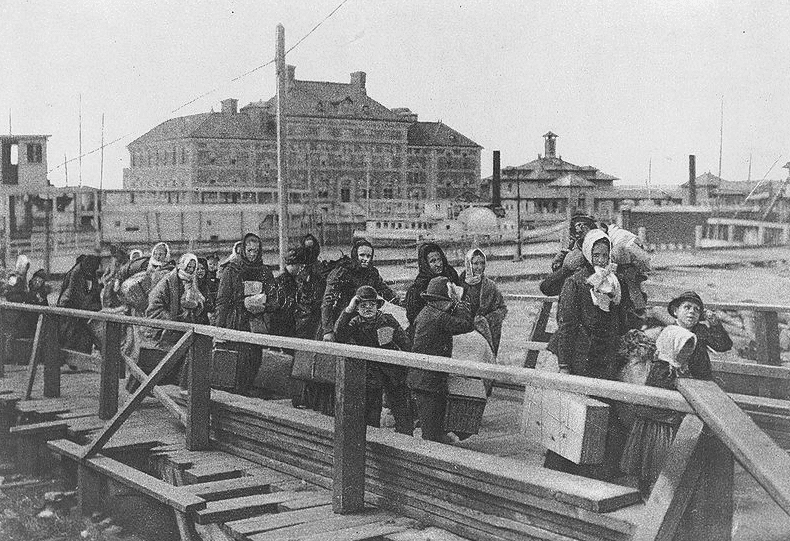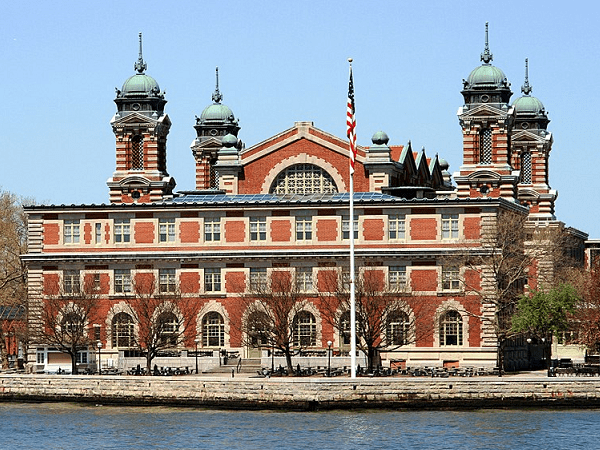It is very likely that you or someone you know has heard an old story passed down through generations that goes like this: An immigrant ancestor arrived in New York with nothing but a bag, a determined attitude, and a name that an Ellis Island immigration inspector found difficult to understand let alone spell. With the stroke of a pen, the inspector changed Hervik to Harwick or Anestis to Ernest. However, these stories of Ellis Island name changes are much more folklore than historical fact.

In this article, we explore the misconceptions about immigrant name changes and how understanding them can help you in researching your family history.
Why Ellis Island Name Changes Are a Myth
The stories of immigrant name changes are based on family stories that developed after the fact. These stories were often a way to fill in the blanks of an ancestor, or to compensate for missing Ellis Island records of a particular family member. Despite the common misconception that Ellis Island inspectors changed immigrants’ names, either intentionally or accidentally, the inspectors didn’t actually write anything down. Since inspectors were not responsible for recording immigrants’ names, any errors most likely occurred in the passengers’ home countries where tickets were purchased and recorded.
The New York immigration records from Ellis Island show that very few immigrant names were changed upon entry. The names that were changed were done so at the request of the individual. Of the immigration clerks working to process new arrivals during the “Golden Age of Immigration,” a third were foreign-born, and all were required to speak at least three languages. Furthermore, clerks were assigned to immigrant groups based on the languages they knew, and if a clerk was unable to communicate with an immigrant, Ellis Island employed hundreds of translators to support the processing.
The job of the clerks and inspectors working at Ellis Island and the other ports of entry was to compare the information of a particular immigrant (and their family) to the manifest created by the shipping company with which they traveled. As such, the story that a family’s name was officially changed by an inspector on Ellis Island doesn’t hold up.
Did Immigrant Name Changes Happen?
Although names were not changed when immigrants arrived on Ellis Island, immigrant name changes did happen. The reasons for someone to change their name were varied, with common themes surrounding the fresh start they hoped to have in their new home.
Name Changes in Official Records
When immigrant name changes are present in official records, they are often gradual and can be found in documents such as leases, bank loans, diplomas and in some cases newspaper articles. These types of records, which would be made in the months and years after someone arrived in the U.S., were written by officials for whom English was usually their primary, or only, language – resulting in slight misspellings and eventual name changes.
New World, New Identity
Many saw the Americanization of their names as a positive sign of assimilation into the new culture. For someone looking for a fresh start and following their American dream, they may have wanted to leave the Old World behind and take on a new identity, an American identity. What better way than an American name?
Simple Translations
Related to the previous point, many immigrants who changed their names early in their naturalization process did so to smooth out the assimilation into their new home. Their reasoning could have been to remove some letters, pick a spelling that more resembled standards of American English, or to give a literal translation of their name into English (e.g., the German name “Schwartz” became the English name “Black”). For more examples, see: Common German Last Names & Their Meanings.
The Problem of Name Changes for Your Genealogy Research
Regardless of the reason why your ancestors may have changed their name, this can create a challenge for people researching their immigrant ancestors. The above reasons are starting points as to why an immigrant name change might have happened, but for many the “why” does not necessarily offer the “how. “
Documenting name changes during naturalization was codified into law in 1906. Before that, Ellis Island records or similar databases would have made no note of them. Missing information is at least part of the reason that many held onto the Ellis Island name changes myth.
After 1906, any name change during the naturalization process was documented. As such, searching the New York immigration records or similar documents may help you uncover the original name of an ancestor. If you’ve reached a dead end in your research due to a potential ancestor name change, try searching multiple genealogy resources including GenealogyBank’s Historical Newspaper Archives.
